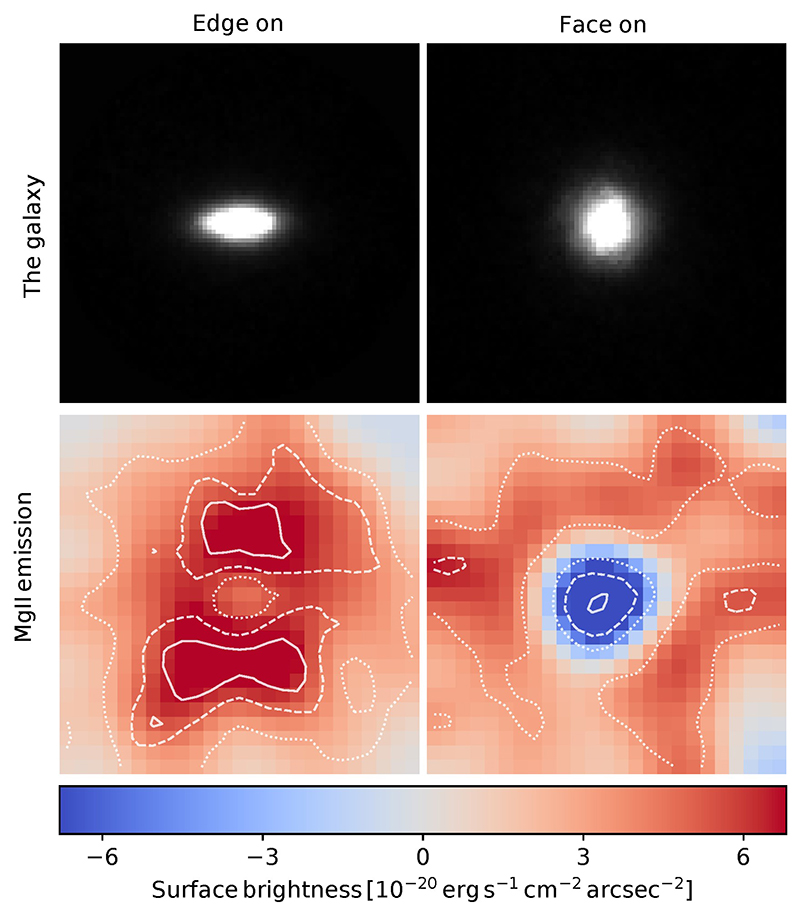Publication of the CRAL in the journal Nature on December 6, 2023. Press alert of CNRS on December 6, 2023.
Galactic winds enable the exchange of matter between galaxies and their surroundings. In this way, they limit the growth of galaxies, that is, their star formation rate. Although this had already been observed in the local universe, an international research team led by a CNRS scientist(1) has just revealed—using MUSE(2), an instrument integrated into the European Southern Observatory’s (ESO) Very Large Telescope—the existence of the phenomenon in galaxies which are more than 7 billion years old and actively forming stars, the category to which most galaxies belong. The team’s findings, to be published in Nature on 6 December 2023, thus show this is a universal process.
Galactic winds are created by the explosion of massive stars. As they are diffuse and of low density, they are usually hard to spot. To see them, the scientists combined images of more than a hundred galaxies obtained through very long exposure times. By studying magnesium atom emission signals, the team was also able to map the morphology of these winds, which appear as cones of matter perpendicularly ejected from both sides of the galactic plane.
In the future, the researchers hope to measure how far these winds extend and the quantity of matter they transport.
- The team’s leader is affiliated with the Lyon Astrophysics Research Center (CNRS / ENS de Lyon / Claude Bernard Lyon 1 University). Scientists from the Galaxies, Étoiles, Physique, Instrumentation (GEPI) (CNRS / Paris Observatory–PSL) research laboratory and multiple international research teams also participated.
- The Multi-Unit Spectroscopic Explorer (MUSE) is operated by seven leading European research laboratories, including the Lyon Astrophysics Research Center, which oversees MUSE activities.

In this figure, magnesium atom emissions have been used to trace galactic winds. The flow of matter occurs along the central axis perpendicular to the galactic disc.
© Yucheng Guo
Reference
Bipolar outflows out to 10 kpc for massive galaxies at redshift z ≈ 1. Yucheng Guo, Roland Bacon, Nicolas F. Bouché, Lutz Wisotzki, Joop Schaye, Jérémy Blaizot, Anne Verhamme, Sebastiano Cantalupo, Leindert A. Boogaard, Jarle Brinchmann, Maxime Cherrey, Haruka Kusakabe, Ivanna Langan, Floriane Leclercq, Jorryt Matthee, Léo Michel-Dansac, Ilane Schroetter, and Martin Wendt.. Nature, December 6, 2023.
DOI : 10.1038/s41586-023-06718-w





